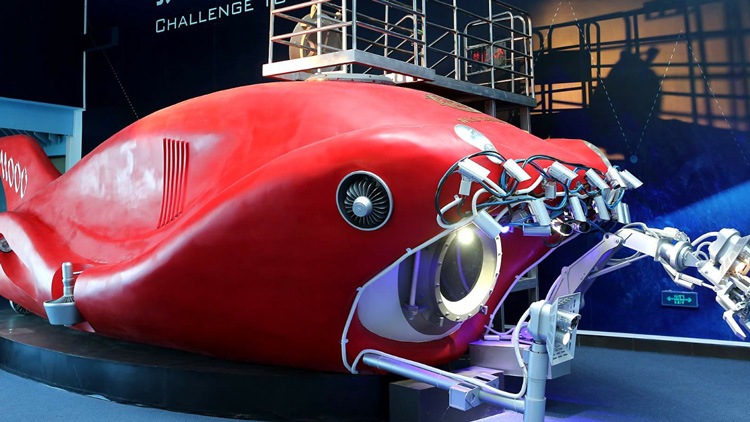The Mariana Trench is known as the deepest part of the world’s oceans. Located in the western Pacific Ocean, the underwater canyon is about 1,580 miles long with an average width of 43 miles, reaching a maximum-known depth of 36,070 feet. To date, only three manned teams have ever descended to such depths – the Swiss scientist Jacques Piccard and US Navy’s Donald Walsh in 1960 and explorer and filmmaker James Cameron in 2012.
That feat will soon change if a new submarine designed and built by a Chinese scientist Cui Weighing is successful. This week, Weicheng launched the mother ship and a prototype of his deep water three-man sub in the first stage of his ambitious plans to visit the extreme depths of the world’s ocean. His project, dubbed Rainbow Fish, is aimed to involve scientists, conservationists and divers in exploring the deepest parts of the world’s oceans.
The Rainbow Fish sub is 10m long with a streamlined shape, has an outer shell of fibreglass and includes externally mounted cameras, a mechanical arm and a glass window 4cm thick.
If all goes as planned, Weicheng’s sub hopes will reach the Challenger Deep region of the Mariana Trench in two hours – about 36 minutes faster than James Cameron’s sub. It’s not Weichengn’s first submarine project however. Cui was one of the senior designers of the Jiaolong, a Chinese government funded manned submarine that has completed more than 100 dives and has reached successfully reached a depth of 23,000 feet.
The Mariana trench is home to strange, mysterious life forms, many of which are yet to be discovered. Some species could have stayed there and evolved for hundreds of millions of years without any contact with the world outside the trench.
‘We must reach there and reveal the full picture of biodiversity in the ocean before the miners bring in their machines,’ he said. ‘Only with solid evidence can we argue with business and government for environmental protection in the deep. The Rainbow Fish is not built for the purpose of exploitation, but conservation. It will focus on research on ecological environment and climate, ocean environment protection and even earthquake forecast.’

